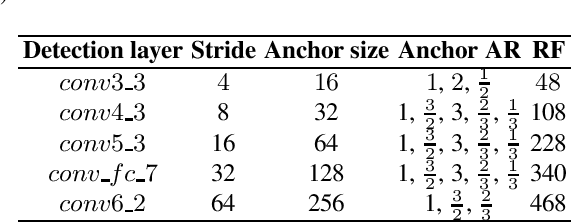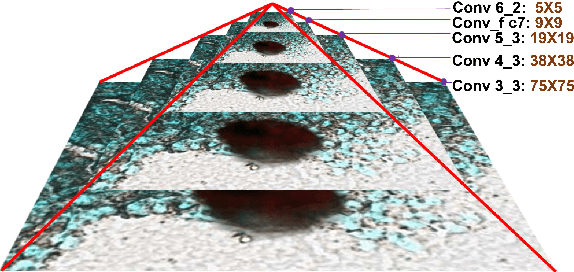Corey Toler-Franklin
Unified Local and Global Attention Interaction Modeling for Vision Transformers
Dec 25, 2024Abstract:We present a novel method that extends the self-attention mechanism of a vision transformer (ViT) for more accurate object detection across diverse datasets. ViTs show strong capability for image understanding tasks such as object detection, segmentation, and classification. This is due in part to their ability to leverage global information from interactions among visual tokens. However, the self-attention mechanism in ViTs are limited because they do not allow visual tokens to exchange local or global information with neighboring features before computing global attention. This is problematic because tokens are treated in isolation when attending (matching) to other tokens, and valuable spatial relationships are overlooked. This isolation is further compounded by dot-product similarity operations that make tokens from different semantic classes appear visually similar. To address these limitations, we introduce two modifications to the traditional self-attention framework; a novel aggressive convolution pooling strategy for local feature mixing, and a new conceptual attention transformation to facilitate interaction and feature exchange between semantic concepts. Experimental results demonstrate that local and global information exchange among visual features before self-attention significantly improves performance on challenging object detection tasks and generalizes across multiple benchmark datasets and challenging medical datasets. We publish source code and a novel dataset of cancerous tumors (chimeric cell clusters).
CNN-Based Action Recognition and Pose Estimation for Classifying Animal Behavior from Videos: A Survey
Jan 15, 2023Abstract:Classifying the behavior of humans or animals from videos is important in biomedical fields for understanding brain function and response to stimuli. Action recognition, classifying activities performed by one or more subjects in a trimmed video, forms the basis of many of these techniques. Deep learning models for human action recognition have progressed significantly over the last decade. Recently, there is an increased interest in research that incorporates deep learning-based action recognition for animal behavior classification. However, human action recognition methods are more developed. This survey presents an overview of human action recognition and pose estimation methods that are based on convolutional neural network (CNN) architectures and have been adapted for animal behavior classification in neuroscience. Pose estimation, estimating joint positions from an image frame, is included because it is often applied before classifying animal behavior. First, we provide foundational information on algorithms that learn spatiotemporal features through 2D, two-stream, and 3D CNNs. We explore motivating factors that determine optimizers, loss functions and training procedures, and compare their performance on benchmark datasets. Next, we review animal behavior frameworks that use or build upon these methods, organized by the level of supervision they require. Our discussion is uniquely focused on the technical evolution of the underlying CNN models and their architectural adaptations (which we illustrate), rather than their usability in a neuroscience lab. We conclude by discussing open research problems, and possible research directions. Our survey is designed to be a resource for researchers developing fully unsupervised animal behavior classification systems of which there are only a few examples in the literature.
3-D Material Style Transfer for Reconstructing Unknown Appearance in Complex Natural Materials
Dec 31, 2021



Abstract:We propose a 3-D material style transfer framework for reconstructing invisible (or faded) appearance properties in complex natural materials. Our algorithm addresses the technical challenge of transferring appearance properties from one object to another of the same material when both objects have intricate, noncorresponding color patterns. Eggshells, exoskeletons, and minerals, for example, have patterns composed of highly randomized layers of organic and inorganic compounds. These materials pose a challenge as the distribution of compounds that determine surface color changes from object to object and within local pattern regions. Our solution adapts appearance observations from a material property distribution in an exemplar to the material property distribution of a target object to reconstruct its unknown appearance. We use measured reflectance in 3-D bispectral textures to record changing material property distributions. Our novel implementation of spherical harmonics uses principles from chemistry and biology to learn relationships between color (hue and saturation) and material composition and concentration in an exemplar. The encoded relationships are transformed to the property distribution of a target for color recovery and material assignment. Quantitative and qualitative evaluation methods show that we replicate color patterns more accurately than methods that only rely on shape correspondences and coarse-level perceptual differences. We demonstrate applications of our work for reconstructing color in extinct fossils, restoring faded artifacts and generating synthetic textures.
Non-Photorealistic Rendering of Layered Materials: A Multispectral Approach
Sep 02, 2021



Abstract:We present multispectral rendering techniques for visualizing layered materials found in biological specimens. We are the first to use acquired data from the near-infrared and ultraviolet spectra for non-photorealistic rendering (NPR). Several plant and animal species are more comprehensively understood by multispectral analysis. However, traditional NPR techniques ignore unique information outside the visible spectrum. We introduce algorithms and principles for processing wavelength dependent surface normals and reflectance. Our registration and feature detection methods are used to formulate stylization effects not considered by current NPR methods including: Spectral Band Shading which isolates and emphasizes shape features at specific wavelengths at multiple scales. Experts in our user study demonstrate the effectiveness of our system for applications in the biological sciences.
Multiscale Detection of Cancerous Tissue in High Resolution Slide Scans
Oct 01, 2020



Abstract:We present an algorithm for multi-scale tumor (chimeric cell) detection in high resolution slide scans. The broad range of tumor sizes in our dataset pose a challenge for current Convolutional Neural Networks (CNN) which often fail when image features are very small (8 pixels). Our approach modifies the effective receptive field at different layers in a CNN so that objects with a broad range of varying scales can be detected in a single forward pass. We define rules for computing adaptive prior anchor boxes which we show are solvable under the equal proportion interval principle. Two mechanisms in our CNN architecture alleviate the effects of non-discriminative features prevalent in our data - a foveal detection algorithm that incorporates a cascade residual-inception module and a deconvolution module with additional context information. When integrated into a Single Shot MultiBox Detector (SSD), these additions permit more accurate detection of small-scale objects. The results permit efficient real-time analysis of medical images in pathology and related biomedical research fields.
 Add to Chrome
Add to Chrome Add to Firefox
Add to Firefox Add to Edge
Add to Edge